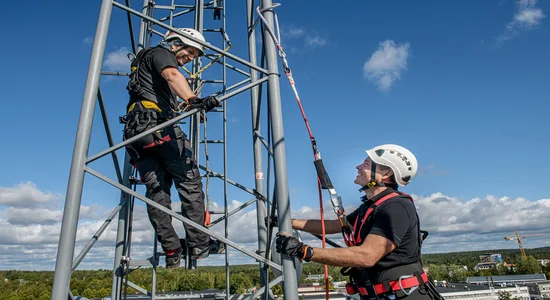Safety isn't just a priority in lifting and rigging—it's a culture. Among the critical facets of ensuring a safe work environment are training and education in fall protection, which are indispensable pillars. Our Know How explores the significance of comprehensive training and education within the context of fall protection for lifting and rigging operations.
Building a Safety Mindset
Lifting and rigging operations inherently involve risks, particularly when working at heights. Training and education are the foundation upon which a safety-conscious workforce is built. Companies can empower their employees to navigate these challenges with confidence and competence by instilling a deep understanding of fall hazards and prevention strategies.
Australia's Emphasis on Training
Australia's regulatory landscape, governed by bodies like Safe Work Australia, places substantial emphasis on training and education in fall protection. Key aspects of this training focus on:
Identification of Hazards: Educating workers to recognize potential fall hazards in diverse lifting and rigging scenarios.
Proper Equipment Usage: Training on the correct usage, maintenance, and inspection of fall protection equipment, including harnesses, lanyards, and anchor points.
Risk Mitigation Strategies: Equipping workers with knowledge of risk assessment and mitigation strategies to prevent falls and injuries.
Tailored Training Programs
Effective training programs are tailored to the needs and challenges of lifting and rigging operations. These programs should encompass:
Role-specific Training: Different roles within lifting and rigging demand distinct safety protocols. Providing role-specific training ensures that each worker understands their responsibilities in preventing falls.
Practical Simulations: Hands-on exercises and simulations offer invaluable experience, allowing workers to practice using equipment and implementing safety procedures in a controlled environment.
Continuous Learning: Safety standards and equipment evolve. Regular training sessions and updates keep workers informed about the latest best practices and advancements in fall protection technology.

Cultivating a Culture of Safety
Education is an ongoing commitment. Companies fostering a culture of safety encourage continuous learning, open communication, and proactive participation in safety initiatives. By nurturing this culture, organizations ensure that safety isn't just a box to tick but a shared value ingrained in every task performed.
Training and education are the cornerstones of a robust fall protection safety program in lifting and rigging operations. By investing in comprehensive training, companies not only fulfil regulatory requirements but also prioritize the well-being of their workforce.
Remember, the true measure of a company's commitment to safety isn't just the equipment it provides; it's the knowledge and empowerment it imparts to its workers. If you have any questions regarding fall protection safety standards and guidelines, don't hesitate to
What Fall Protection Equipment Is Right For You?
Your comprehensive guide to choosing the correct fall protection equipment.
Fall Protection Safety Checklist
Your checklist for work involving fall protection in lifting and rigging operations.



